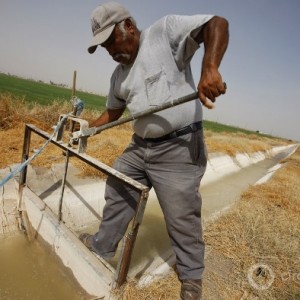The Stream, April 28: Study Links Extreme Rainfall to Climate Change
The Global Rundown |
Researchers in Switzerland found links between warming global temperatures and the frequency of extreme rainfall events. The United States lowered the recommended level of fluoride in drinking water. Reduced hydropower could increase the risk of power brownouts in the western United States this summer, and unrealistic water transfer ideas abound in California. China is betting on public-private partnerships to reduce water pollution.
“The expense and the politics is so unrealistic it’s a distraction from the projects we actually can get done.”–Lester Snow, executive director of the California Water Foundation, on the numerous ideas being floated to solve California’s drought problems with water pipelines and shipments from Alaska, the Great Lakes, and other water-rich places. (The Los Angeles Times)
By The Numbers |
0.7 milligrams per liter New fluoride level recommendation for public drinking water in the United States, down from levels as high as 1.2 milligrams per liter. Newsweek
Science, Studies, And Reports |
As many as one in five extreme rain storms around the the world are the result of climate change, while rising temperatures are making extreme heatwaves four to five times more likely, according to a study by researchers at the Swiss Federal Institute of Technology. The study was published in the journal Nature Climate Change. Guardian
On The Radar |
Droughts in the western United States could create power shortages this summer in areas that rely on hydropower, according to U.S. Energy Secretary Ernest Moniz. Water risks are expected to increase for the energy sector under climate change scenarios. Reuters
China announced that it will be encouraging public-private partnership projects to tackle water pollution. The government plans to use financial incentives, investment subsidies, and fundraising allowances to facilitate the projects, the announcement said. Xinhua
A news correspondent for Circle of Blue based out of Hawaii. She writes The Stream, Circle of Blue’s daily digest of international water news trends. Her interests include food security, ecology and the Great Lakes.
Contact Codi Kozacek






That LA Times article about all the “goofy” ideas people are coming up with is inappropriate. A writer who starts out using a negative term such as “grab” when referring to pipelines, has no interest in considering ideas, just in shooting them down with sarcasm. We want people to freely express ideas. That they are or are not workable is not the issue. Get people involve, get them thinking, and participating, rather than telling them that is just “dumb”.
I have read comments by many people, considering, intelligent people, suggesting a pipeline. Not one of them has suggested “grabbing” anyone’s water. The idea is to take flood waters or excess precip in the form of snow. No one needs or wants the very expensive bullet train. Take that money (yes, I do understand it is not realistic at this juncture). We can apply it to negotiations, purchases, infrastructure, hydraulics. Really people are we stuck in the 50s?
Unless we sit down and think about it, and mull it over, how do we know it will not work? Or that some modification of this idea will not work?
California has a larger economy than Canada’s. How do we know Canada may not like to buy into some of that economy? Shooting down ideas is easy. Building them, considering them, or explaining why the idea may not work, is not. Never take the easy way out.
Grabbing anyone’s water is a silly idea and comes from no one other than the know it alls who write these kinds of discouraging articles. NEVER DISCOURAGE PEOPLE FROM PARTICIPATING. Let them discover by gaining knowledge why their idea may not work.
Keep minds open, who knows whether some modification of an outwardly odd idea may work or not, but do not label them and discourage people from thinking about water. When that happens, people just shrug their shoulders and hope the government can fix it.